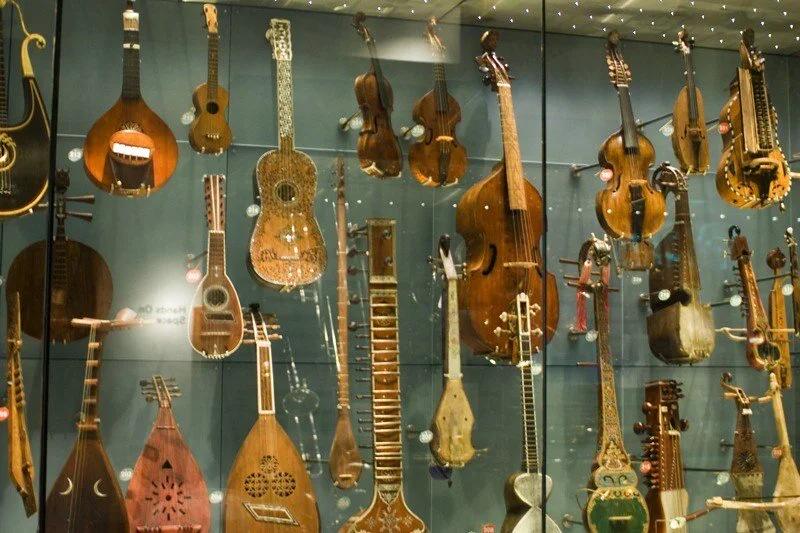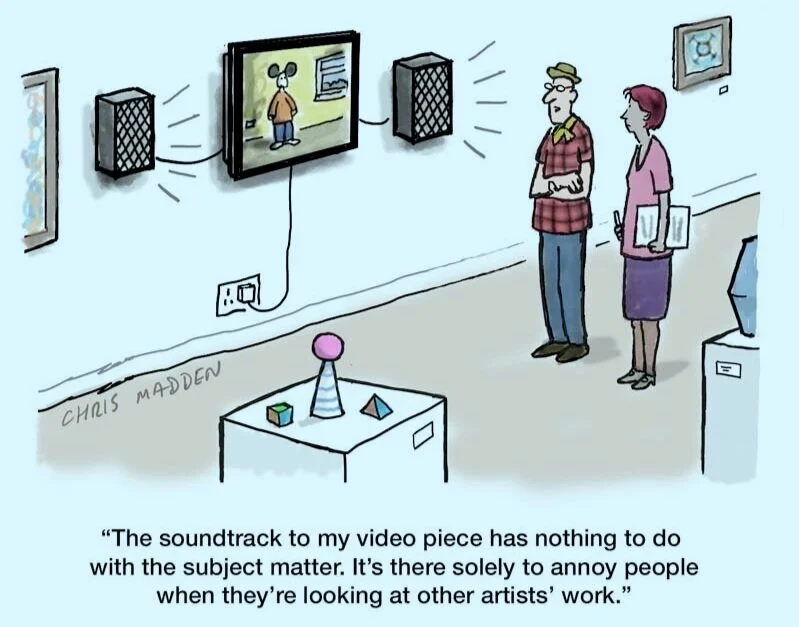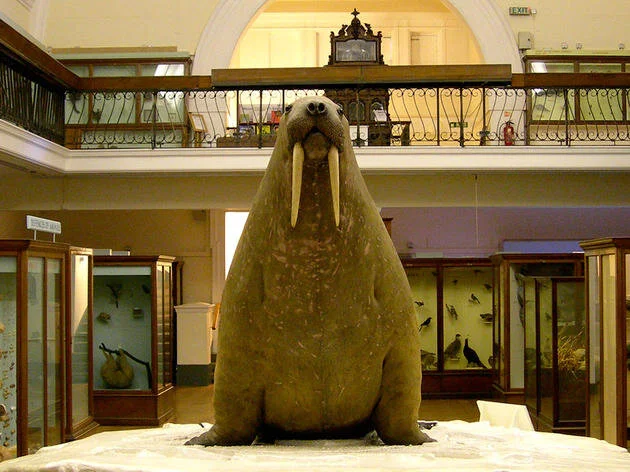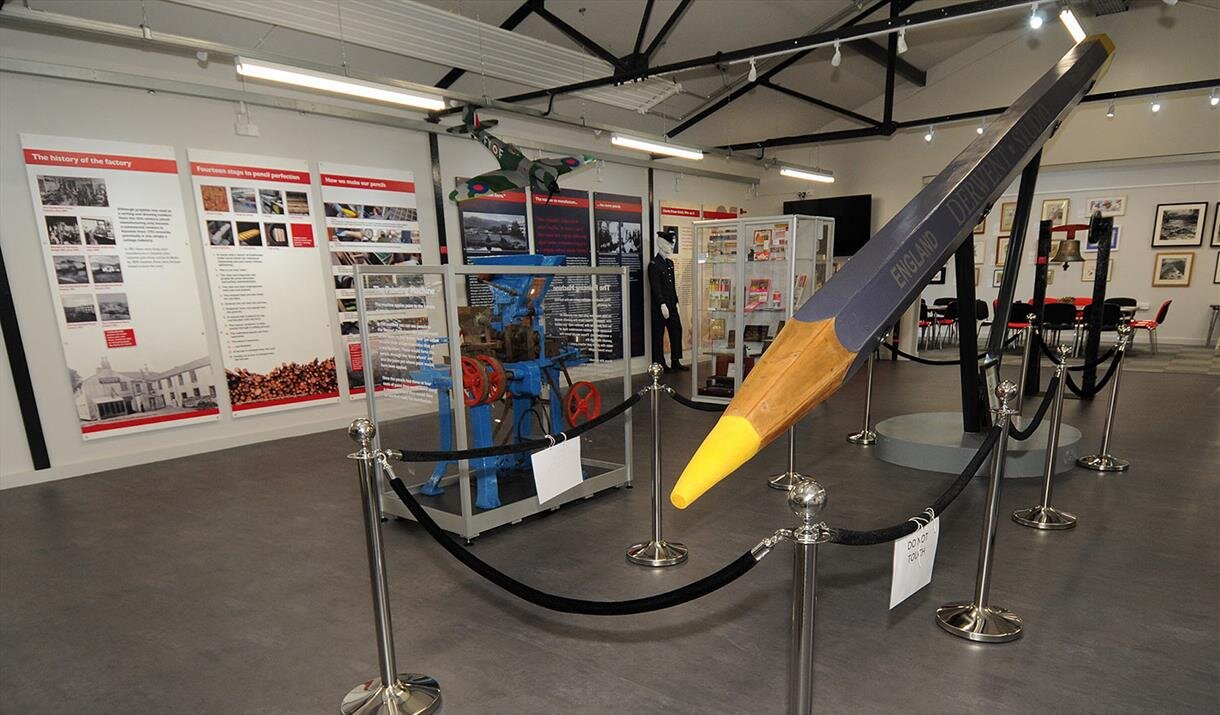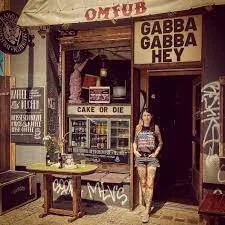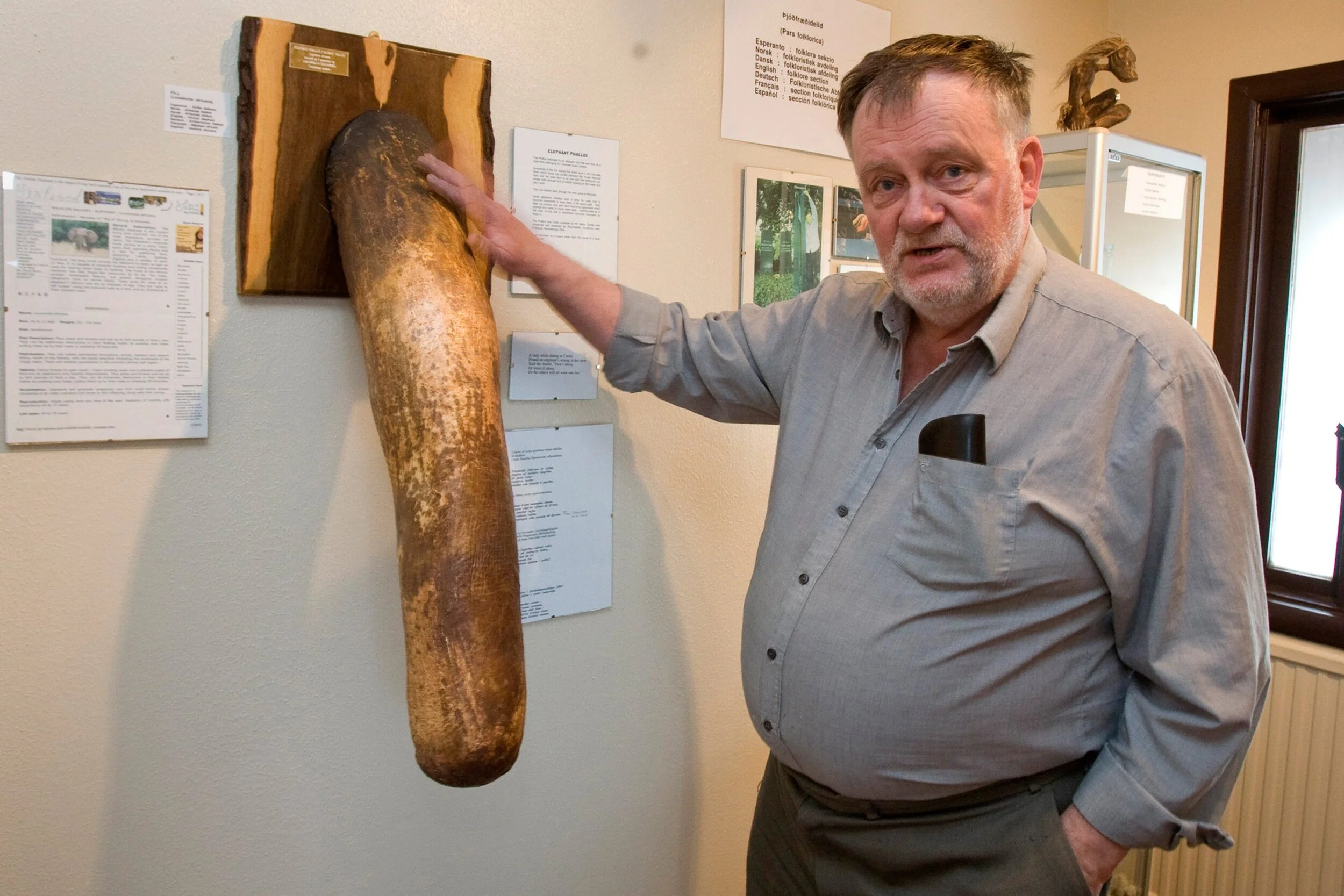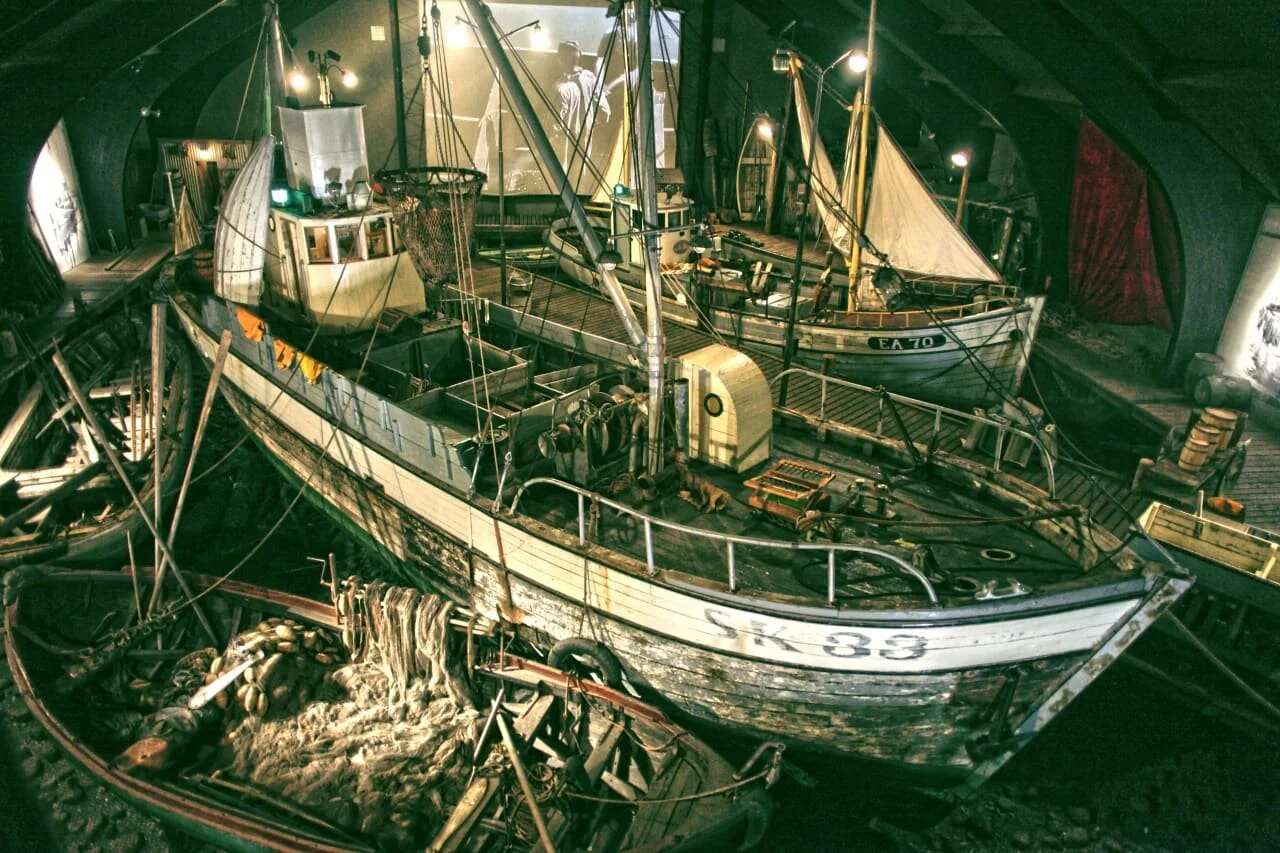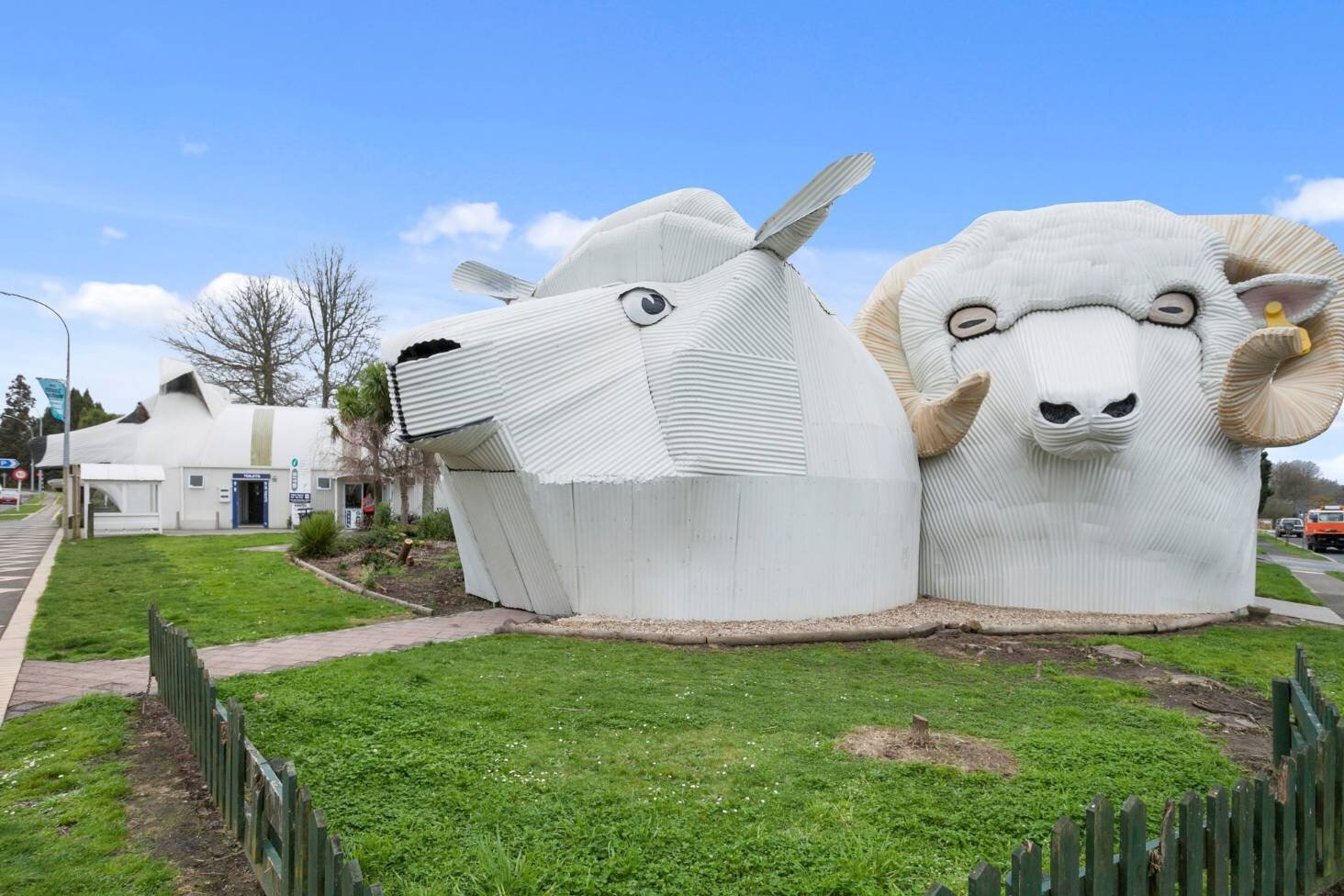By The Landlord
“Real museums are places where Time is transformed into Space.” – Orhan Pamuk, The Museum of Innocence
“When you think about it, department stores are kind of like museums.” – Andy Warhol
“Give me a museum and I’ll fill it.” – Pablo Picasso
“Exhibitions are kind of ephemeral moments, sometimes magic moments, and when they're gone, they're gone.” – Hans-Ulrich Obrist
“It could be seen as narcissistic to have your own museum, but for me, it's such a long time ago - I have perspective. That young man in the funny clothes - he's almost a stranger, so I can tell his story.” – Bjorn Ulvaeus, ABBA
“Museums are wormholes to other worlds. They are ecstasy machines. Follow your eyes to wherever they lead you…and the world should begin to change for you.” – Jerry Saltz
"An exhibition is in many ways a series of conversations. Between the artist and viewer, curator and viewer, and between the works of art themselves. It clicks when an exhibition feels like it has answered some questions, and raised even more." – Thelma Golden
“That which, perhaps, hears more nonsense than anything in the world, is a picture in a museum.” – Edmond de Goncourt
They span grand designs of gothic buildings to high-concept modern architecture, small, exclusive locations to local bars to cafes, private homes to pop-up shops to damp railway arches. They may be the permanent collections of vastly rich Victorian benefactors, oil billionaires or public bodies, down to the specialist obsessions of the strangest eccentrics. They could be the product of a mass-marketed, multimillion art industry to the weirdest, tiny tinkerings of obscure, oddball fidgetry. They are witness to human nature in all of its guises, from glorious genius and gobsmacking gullibility, from exquisite to the extraordinarily awful, from the gentlest to the most gory, the most profound to the utterly pretentious, from the quick-sell tacky to the truly timeless.
But whatever exhibition, in museum or gallery or alternative location, these are essentially public spaces where all manner of people might gather, from high-minded art lovers to private view flirty first-nighter wine-necking networkers, restless lines of school-trip kids or the heat-seeking homeless. They are where some have found themselves bored and tired, or where others have discovered their eureka moment where the art, or exhibit, or a random person looked right back at them, and whatever transpired, changed their life.
Museums and galleries are fascinating places that have inspired many songs, whether it is the place, the people and the encounters that occur there, or the exhibits and art itself, so this week, it’s time to turn our own private view into a public one, and have an exhibition of songs that reference them in title or lyrics, whether in the main, or passing.
“I long ago ran out of bookshelf space and so, like a museum with its art, simply rotate my books from the boxes to the shelves and back again,” says the writer and book critic Michael Dirda. Sounds familiar? In many ways our own record and book collections are like little museums of personal lives, each album or song with its own story and memory, and our Song Bar and the accompanying Marconium library archive a public collection of all those sparky thoughts, connections and musical discoveries.
A sound idea …
Some songs that spring to mind reference specific museums devoted to particular people, whether they be famous artists, inventors or otherwise, or museum landmarks, or the strange things within them, from waxworks or even types of people. But, dear Bar punters, I’ll leave you to fill our exhibition in comments below. In the meantime, let’s take a rapid tour of some aspects of this topic to help inspire.
One of the accusations against museums are that they aren’t ‘living’, but below there are many examples that contradict this. And then there are also semi-location, semi-interactive online museums, such as Zagreb’s The Museum of Broken Relationships, sharing in the collective misery of love gone wrong. Exhibits include video confessionals, items full of romantic memories gone sour and, in one case, an axe that a woman used to dismantle her ex’s furniture when she was jilted. It won the Kenneth Hudson Award given to Europe’s most innovative museums.
One exhibit I’ll be visiting soon is the pop-up shop Museum of Youth Culture in Carnaby Street, which has a huge interactive archive and is currently showing flyers of music events from the 1970s.
What I find interesting about museums, galleries and spaces, alongside their actual contents (or often more so), is as much how people behave within them. Several years ago, I was in the Serpentine Gallery in London’s Hyde Park where a friend of mine worked an an invigilator. That’s an odd, but stressful job at times, as you appear to just sit in the space and not do much, but because you have to keep an eye on visitors, you can’t just read a book and relax. On one occasion a family arrived the the kids starting running around, causing mayhem, and had to be stopped from touching or clambering around the art, some of which were fragile sculptures.
One of the kids, a boy of about eight, had a very runny nose, and at one point, his hand covered in horrible wet snot, without being seen, wiped it on the pristine white wall, whereupon after several minutes, a green-brown smear dried. Several minutes later, a visitor to the gallery went past this, and took this swish-brush shape of muted colour to be one of the artworks, inspecting it closely, and commenting quietly to himself, confused by its absence from the accompanying exhibition, catalogue, something very much like “Hmm. Interesting. Challenging.”
This slightly reminds me of the event put together by David Bowie and William Boyd in 1998, launching the latter’s book Nat Tate: An American Artist 1928–1960, an apparent biography of the influential “abstract expressionist who destroyed '99%' of his work and leapt to his death from the Staten Island ferry. His body was never found.” A major private view was held at Jeff Koons’ studio, where many high-profile art critics waxed lyrical about Tate’s work and importance. Of course none of them clocked that it was on 1st April and that this was complete hoax designed by Boyd and Bowie to expose all the big-money hype and bullshit of the industry.
Public behaviour is indeed odd at galleries. In the same location as the snot incident, I also happened to witness the exhibition where actress Tilda Swinton slept in a glass box, presumably staying up at night so she’d be tired enough to do this in the daytime. Whenever she’d turn over in her sleep, crowds would rush around to the other side of her to stare closely at her every move, tiny twitch and bit of snore-dribble. An artwork where even the exhibit was tired.
Tired exhibit? Visitors watch Tilda Swinton sleep at the Serpentine Gallery
Museums and galleries can admittedly, if you’re not in the mood feel boring and ‘dead’, but at other times, very exciting. I’ll never forget seeing a huge dinosaur skeleton in the Natural History Museum as a child. And it’s fantastic that there are many huge, high-profile galleries that attract people to visit, and many buildings where its free to do so. It’s very important that this access remains. While many great artworks can be witnessed, however in past few years I do find increasingly challenging, so well are things marketed that costs are becoming prohibitive, but more so time and space, and that to see any major exhibition, even if you book a particular time slot, the experience can be like shuffling around a space like shackled prisoners under time constraints, straining to see anything over other heads.
As the architect Thomas Heatherwick put it: “The world of contemporary art has, in a way, exponentially expanded in the last couple of decades, and almost every major city in Europe and Asia and North America has fallen over themselves to have their own contemporary art museum.”
So while the famous spaces, such London’s Tate Modern or New York’s Museum of Modern Art (MOMA) are great, it can be much more fun to visit the lesser known exhibition spaces. One of my favourite free museums is the Horniman in south London, packed with a huge collection of musical instruments, a giant stuffed walrus and other strange animals, African masks and other ephemera, and some lovely gardens. It’s a truly eccentric collection left to the public by Victorian Liberal MP and social reformer Frederick Horniman.
I am the walrus: Horniman Museum
“I've got a house full of taxidermy. It's like a museum. I have about 200 pieces in total, all ethically sourced,” says the showman illusionist, Derren Brown. But for that kind of thing, it’s hard to beat the truly eccentric Viktor Wynd and his collection of animal and other oddities at Viktor Wynd Museum at The Last Tuesday Society in east London where all sorts of strange experiences await you.
The British Museum is important as, founded in 1753 and opened in 1759, it was the first national museum to cover all fields of human knowledge, open to visitors from across the world, eventually becoming free access. But as much as these grand institutions from the Louvre in Paris or the Prada in Madrid, or even the Rock & Roll Hall of Fame - on 1100 Rock and Roll Boulevard in Cleveland, Ohio, how about visiting the Derwent Pencil Museum, or the Lawnmower Museum in Southport, Merseyside?
Drawing visitors? Derwent Pencil Museum
Or if it’s specific music you fancy, how about the tiny Ramones Museum and Bar in Berlin, filled with photographs from the days of CBGB, other sweaty clubs of late 70s in New York and more?
Hey, it’s the Ramones Museum, Berlin
If you can, try London’s Soane Museum, perfectly preserved home of the famous architect, filled with art and sculpture that can be visited at night by candlelit.
Many of the grander museums are as much expressions of mighty egos as well as art interest, and their architecture are huge erections to that achievement. To to turn that idea on its head, as it were, how there’s the actual penis itself, in the form of Iceland’s Phallological Museum, where all forms of the male part, from a massive 2-metre whale member to the tiniest hamster’s 2 millimetre, a merman’s manhood as well as that of an elf (invisible of course).
A place where many hang out: Iceland’s museum of the penis
Great museums also capture a time and place. If you’re ever in Iceland, I’d also highly recommend the Herring Era Museum, which truly captures what it must have been like to live in a fishing village, where you can clamber in every boat, bed, and truly smell and sense the hardships and the lifestyle.
Something fishy: Herring Era Museum
Or if you’re done with somewhere major like MOMA, how about MUSA, also known as Cancun Underwater Museum in Mexico, with all of its exhibits in the Caribbean reef waters, one which is almost certainly holding your breath for and could properly be described as a dive.
MUSA, also known as Cancun Underwater Museum in Mexico
And from MUSA, why not take a trip to MOBA, Museum Of Bad Art, Massachusetts, which turns bad to good in the nicest, most amusing possible way.
How about museums housed in strange buildings? There’s the Guggenheim in Bilbao of course, with its bendy metal shapes created by Frank Gehry, but even odder is his design of the Biomuseo in Panama, which looks like late Matisse cut-out and a Mondrian flung together in the Large Hadron Collider with all the rubble made into a crazy construction.
Colourful exhibit: Biomuseo, Panama
Or if you just like animals and unusual architecture, how about New Zealand’s Sheep And Dog Building, which is as much information centre about that country’s biggest farming industry.
Rounding up: Sheep and Dog Buidings in New Zealand
But now it’s time to round up this little tour and welcome our guest shepherding musical curator back into the fold, and it’s a delight to reveal that it is the return of the excellent EnglishOutlaw! Show off your best and most collectible nominations about venues of art and artefacts, whether that is the building, the people, or the interacting with the items within, from grand palaces to tiny garages. Place your songs in comments below for deadline at 11pm UK time on Monday, and playlists published next week. It’s time to make an exhibition of your stuff.
New to comment? It is quick and easy. You just need to login to Disqus once. All is explained in About/FAQs ...
Fancy a turn behind the pumps at The Song Bar? Care to choose a playlist from songs nominated and write something about it? Then feel free to contact The Song Bar here, or try the usual email address. Also please follow us social media: Song Bar Twitter, Song Bar Facebook. Song Bar YouTube, and Song Bar Instagram. Please subscribe, follow and share.
Song Bar is non-profit and is simply about sharing great music. We don’t do clickbait or advertisements. Please make any donation to help keep the Bar running:

